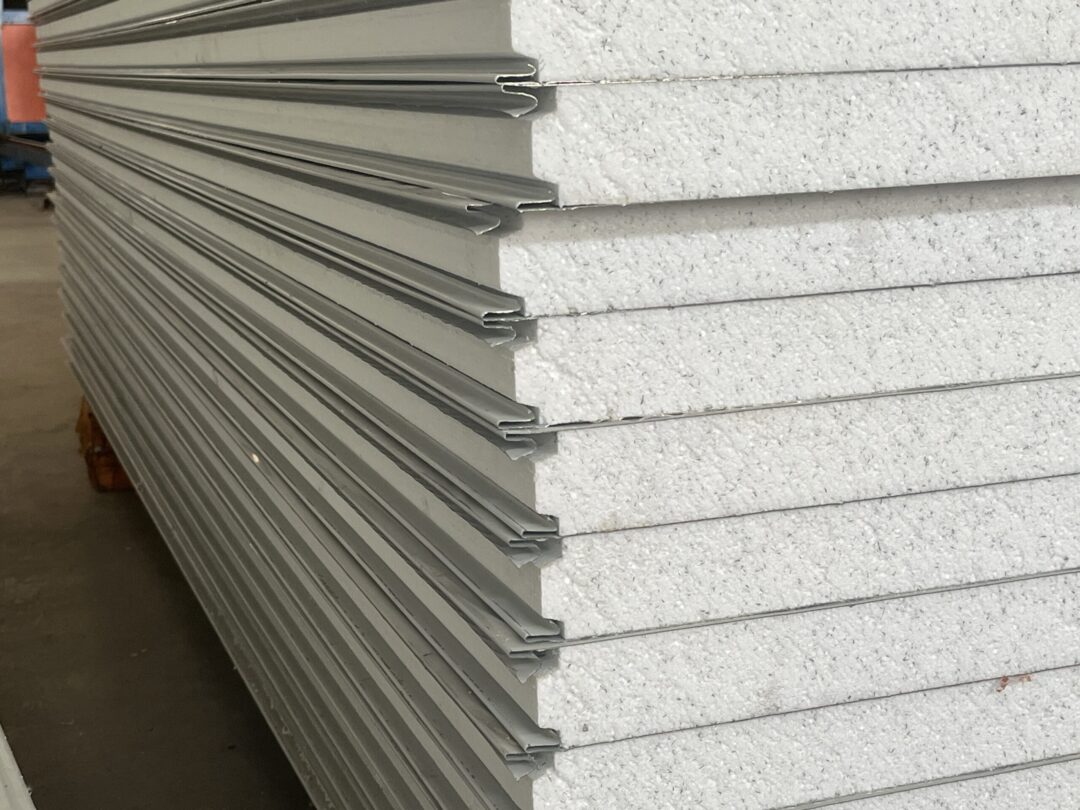Choosing the right insulated panel is critical for performance, compliance, and cost. This guide compares EPS, PU, and PIR coolroom panels in detail—covering thermal performance, fire behaviour, cost, and Australian standards.

Why Panel Choice Matters in Australia
Australia’s climate places high demands on cold storage and coolroom facilities. Rising energy costs, strict food safety laws, and compliance with the National Construction Code (NCC) mean that your choice of panel material—EPS, PU, or PIR—directly impacts performance, cost, and safety.
Each material has unique strengths. Expanded Polystyrene (EPS) is lightweight and economical, Polyurethane (PU) delivers superior insulation, and Polyisocyanurate (PIR) provides enhanced fire resistance. Understanding these differences is essential for choosing the right panel for your business.
What Are EPS, PU, and PIR Panels?
EPS (Expanded Polystyrene)
EPS is a rigid, closed-cell foam made by expanding polystyrene beads with steam and pressure. It is lightweight, affordable, and commonly used in coolrooms across Australia. EPS panels typically feature 0.45 mm steel skins with a tongue-and-groove or Z-Lock system for airtight joins. Learn more about our EPS wall panels.
PU (Polyurethane)
PU panels use a closed-cell foam core with even lower thermal conductivity than EPS. They offer greater insulation per millimetre but are generally more expensive. PU is widely used in freezers and facilities where space is limited.
PIR (Polyisocyanurate)
PIR is chemically similar to PU but has improved cross-linking in its polymer structure. The result is better fire resistance and slightly higher R-values. PIR is often specified for critical cold storage or where NCC fire compliance is a concern.
Side-by-Side Specs: EPS vs PU vs PIR
Values shown are typical for cold storage panels at 50 mm thickness. Always confirm project-specific requirements.
| Property | EPS | PU | PIR |
|---|---|---|---|
| Thermal conductivity λ (W/m·K) | 0.035–0.038 | 0.022–0.026 | 0.021–0.024 |
| R-value @ 50 mm (m²·K/W) | 1.3–1.5 | 1.9–2.3 | 2.1–2.4 |
| Fire behaviour | Combustible (use FR grades) | Moderate | Best (enhanced performance) |
| Cost | Lowest ($) | $$ | $$$ |
| Weight & handling | Light, easy to cut/join | Moderate | Moderate |
| Lifespan (proper install) | 10–20+ years | 15–25+ years | 15–25+ years |
| Best use cases | General coolrooms, retail, storage | Space-limited builds, freezers | Freezers, strict fire regs |
Thermal Performance in Detail
Energy efficiency is one of the biggest factors in panel selection. The higher the R-value, the less heat transfer occurs. In hot Australian summers, poor insulation can increase refrigeration load by up to 40%. Below is a guide to typical R-values at different panel thicknesses:
| Thickness | EPS R-value | PU R-value | PIR R-value |
|---|---|---|---|
| 35 mm | ~1.0 | ~1.4 | ~1.5 |
| 50 mm | ~1.4 | ~2.0 | ~2.2 |
| 75 mm | ~2.1 | ~3.0 | ~3.3 |
| 100 mm | ~2.8 | ~4.0 | ~4.4 |
| 150 mm | ~4.2 | ~6.0 | ~6.6 |
For freezers below −18°C, 100–150 mm panels are recommended. For chill rooms above 0°C, 50–75 mm is sufficient. See our thickness guide.
Fire Performance and Compliance
Fire safety is a critical factor. EPS is combustible but widely used when combined with fire-resistant linings, junctions, and NCC-approved details. PIR is the top performer, meeting stricter insurance and certifier requirements. For details, check our article: Do EPS panels meet Australian codes?
Cost and Lifecycle Value
EPS panels are significantly cheaper upfront—often 30–50% lower cost per square metre than PU or PIR. However, PU/PIR may reduce refrigeration bills in high-energy environments. Always weigh capital vs operating costs over the lifespan of the facility.
Applications by Industry
- Hospitality & Retail: Cafés, restaurants, butcher shops — EPS often chosen for affordability.
- Supermarkets & Cold Logistics: PIR preferred for fire safety and compliance.
- Pharmaceutical & Laboratories: PU or PIR for precise temperature control.
Durability and Maintenance
All three materials deliver long service life if installed correctly. Maintenance considerations include cleaning, sealing junctions, preventing moisture ingress, and repairing dents or scratches promptly. For handling advice, see how to cut coolroom panels and how to join panels.
Environmental Impact
EPS is fully recyclable and widely reused in packaging and insulation. PU and PIR are less recyclable but provide higher energy savings per m² over time, which offsets embodied carbon. The choice depends on whether you prioritise recyclability or maximum efficiency.
Frequently Asked Questions
Which panel type meets BCA/NCC standards?
All three can comply when specified correctly. EPS requires fire-rated grades and careful detailing. PIR offers the easiest compliance path. See our NCC guide.
What panel thickness should I choose?
50 mm for chillers, 75 mm+ for freezers. See our thickness comparison.
Can I paint coolroom panels?
Yes—with proper surface prep and coatings. Full guide: painting panels.
Can I screw into EPS panels?
Yes, with correct fasteners. See: screwing guide.
Which panel is cheapest?
EPS is lowest cost per m², often 30–50% less than PU/PIR.
Which panel lasts longest?
With correct install, all last 20+ years. PU/PIR may maintain insulation slightly better over time.
